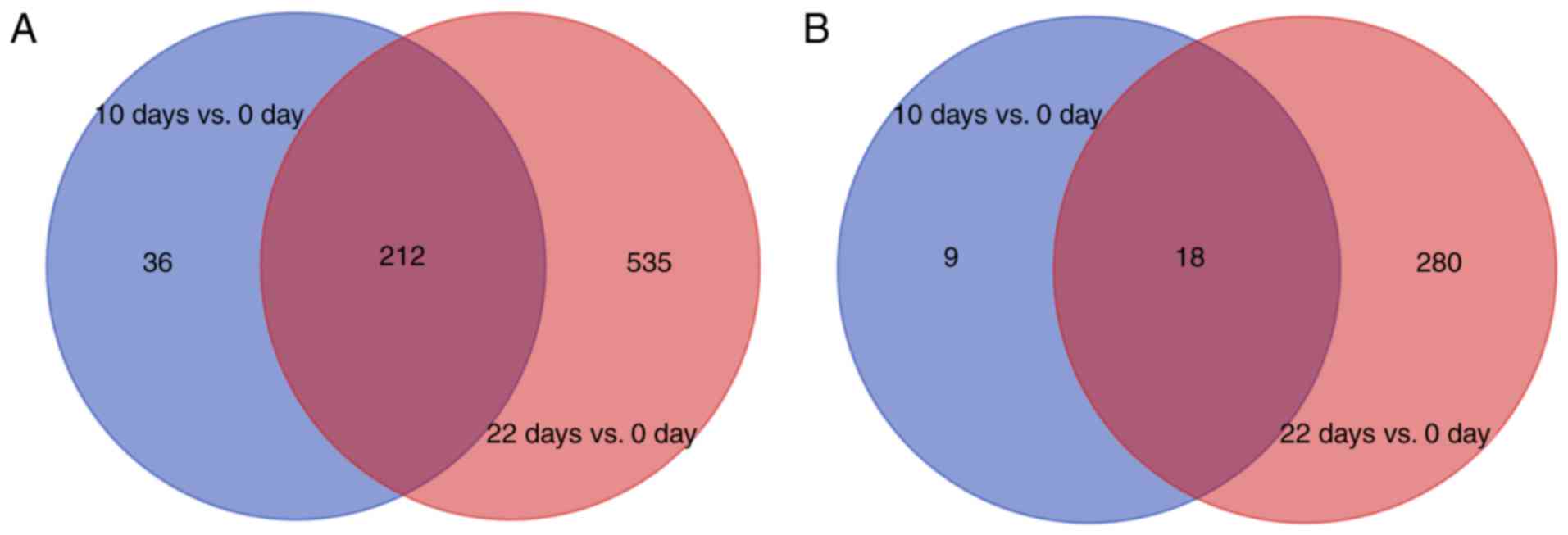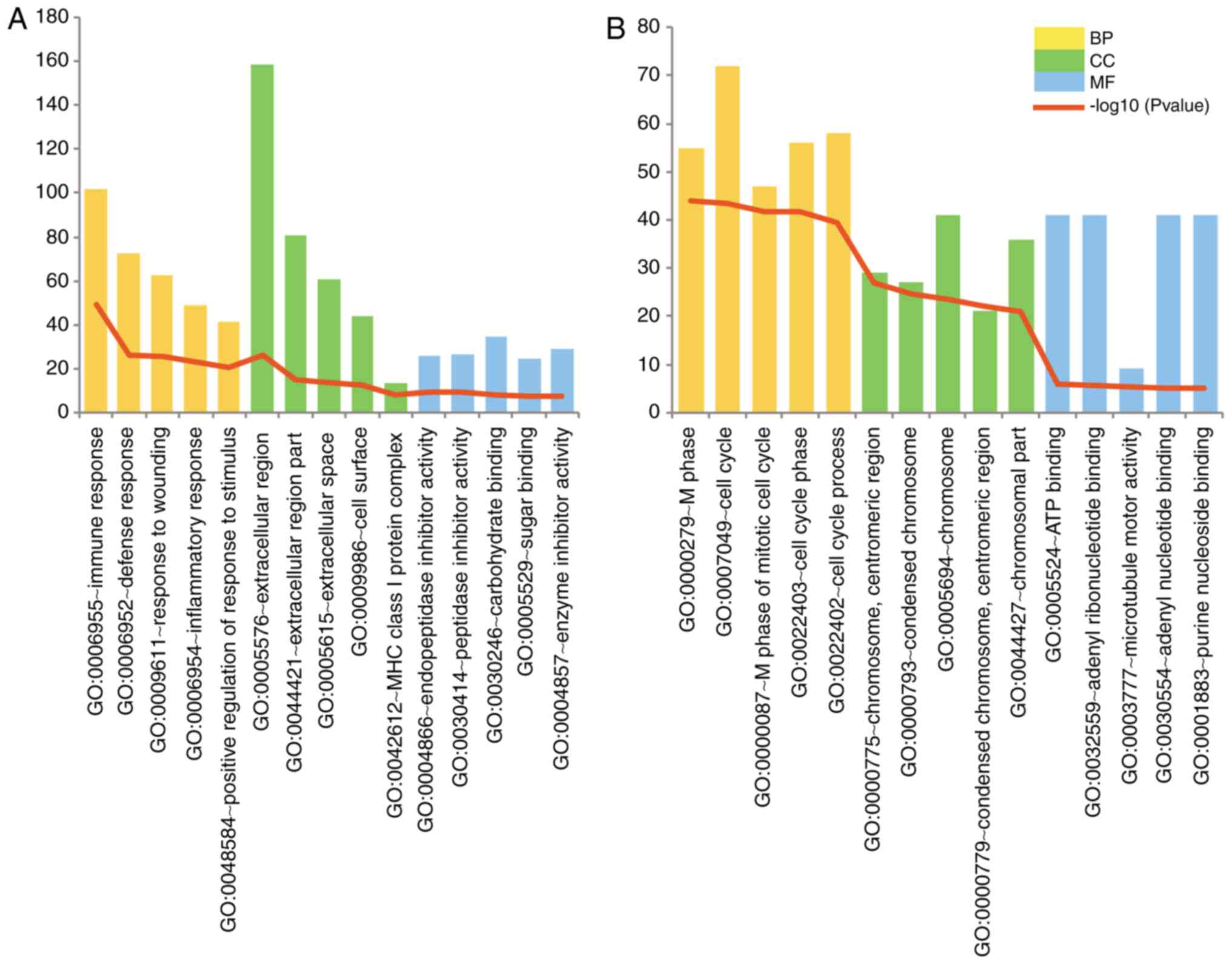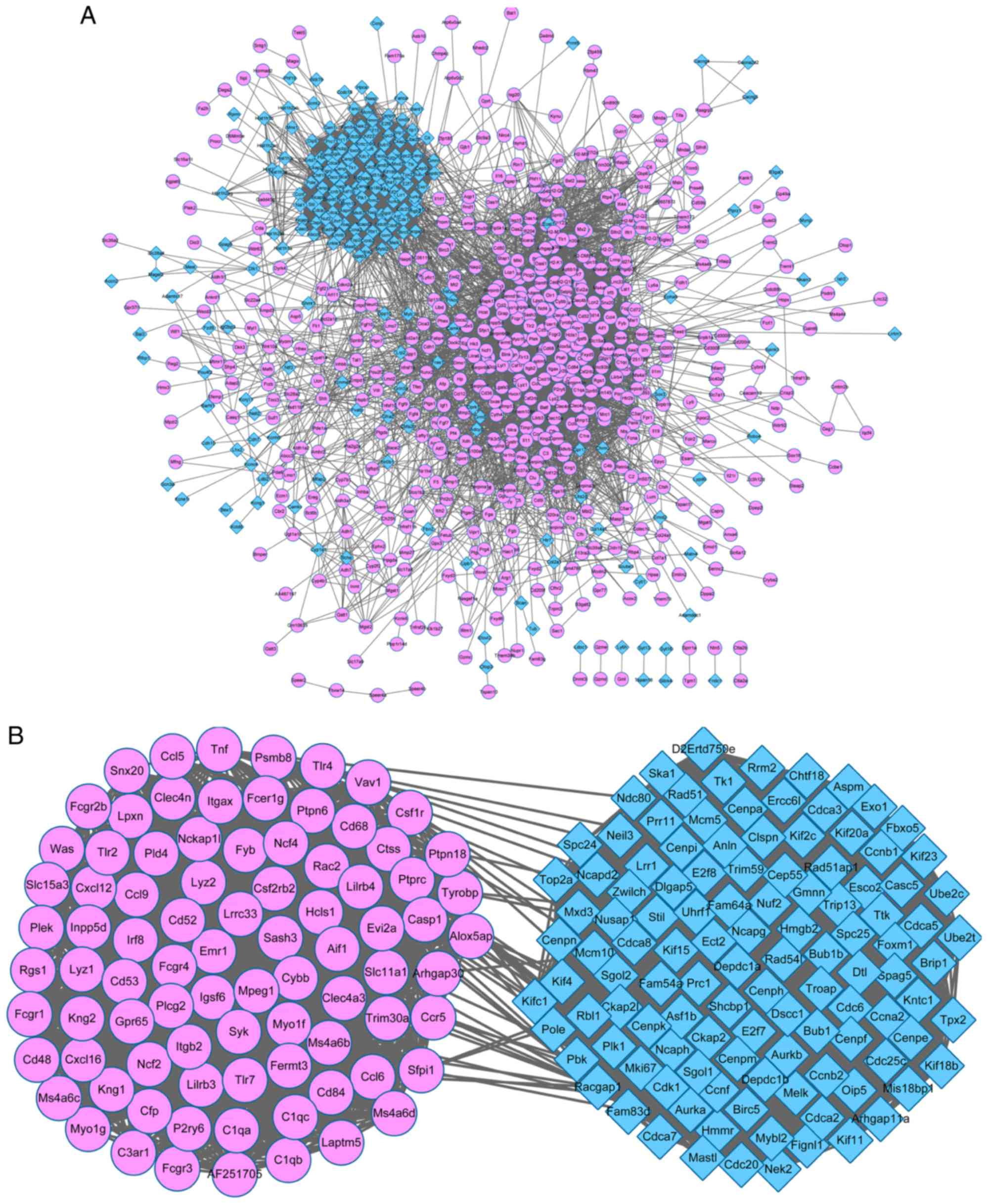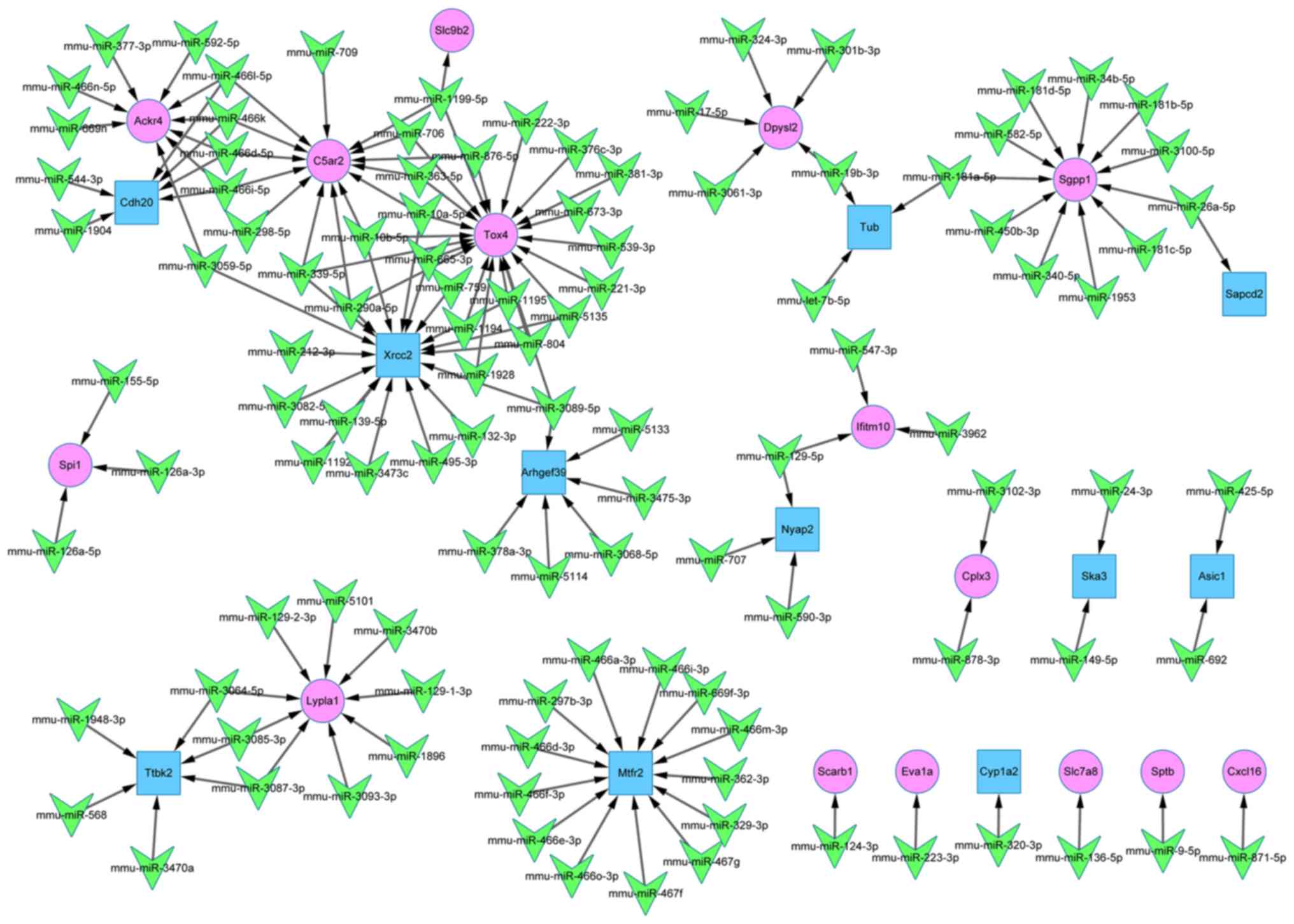|
1
|
Krajewski KM, Lewis RA, Fuerst DR,
Turansky C, Hinderer SR, Garbern J, Kamholz J and Shy ME:
Neurological dysfunction and axonal degeneration in
Charcot-Marie-Tooth disease type 1A. Brain. 6:1516–1527. 2000.
View Article : Google Scholar
|
|
2
|
Pereira JA, Lebrun-Julien F and Suter U:
Molecular mechanisms regulating myelination in the peripheral
nervous system. Trends Neurosci. 35:123–134. 2012. View Article : Google Scholar
|
|
3
|
Nave KA: Myelination and support of axonal
integrity by glia. Nature. 468:244–252. 2010. View Article : Google Scholar : PubMed/NCBI
|
|
4
|
Ritter ST, Jense RJ and Davies JM:
Subarachnoid and peripheral nerve block in a patient with
Charcot-Marie-Tooth disease. Open J Anesthesiol. 3:44–47. 2013.
View Article : Google Scholar
|
|
5
|
Nave KA and Werner HB: Myelination of the
nervous system: Mechanisms and functions. Annu Rev Cell Dev Biol.
30:503–533. 2014. View Article : Google Scholar : PubMed/NCBI
|
|
6
|
Birchmeier C and Nave KA: Neuregulin-1, a
key axonal signal that drives Schwann cell growth and
differentiation. Glia. 56:1491–1497. 2008. View Article : Google Scholar : PubMed/NCBI
|
|
7
|
Taveggia C, Zanazzi G, Petrylak A, Yano H,
Rosenbluth J, Einheber S, Xu X, Esper RM, Loeb JA, Shrager P, et
al: Neuregulin-1 Type III determines the ensheathment fate of
axons. Neuron. 47:681–694. 2005. View Article : Google Scholar : PubMed/NCBI
|
|
8
|
Kao SC, Wu H, Xie J, Chang CP, Ranish JA,
Graef IA and Crabtree GR: Calcineurin/NFAT signaling is required
for neuregulin-regulated schwann cell differentiation. Science.
323:651–654. 2009. View Article : Google Scholar : PubMed/NCBI
|
|
9
|
Ye H, Jin YK, Dupree J, Tewari A,
Melendez-Vasquez C, Svaren J and Casaccia P: Yy1 as a molecular
link between neuregulin and transcriptional modulation of
peripheral myelination. Nat Neurosci. 13:1472–1480. 2010.
View Article : Google Scholar
|
|
10
|
Tawk M, Makoukji J, Belle M, Fonte C,
Trousson A, Hawkins T, Li H, Ghandour S, Schumacher M and Massaad
C: Wnt/beta-catenin signaling is an essential and direct driver of
myelin gene expression and myelinogenesis. J Neurosci.
31:3729–3742. 2011. View Article : Google Scholar : PubMed/NCBI
|
|
11
|
Stendel C, Roos A, Kleine H, Arnaud E,
Ozçelik M, Sidiropoulos PN, Zenker J, Schüpfer F, Lehmann U, Sobota
RM, et al: SH3TC2, a protein mutant in Charcot-Marie-Tooth
neuropathy, links peripheral nerve myelination to endosomal
recycling. Brain. 133:2462–2474. 2010. View Article : Google Scholar : PubMed/NCBI
|
|
12
|
Yoshimura K and Takeda S: Hedgehog
signaling regulates myelination in the peripheral nervous system
through primary cilia. Differentiation. 83:S78–S85. 2012.
View Article : Google Scholar
|
|
13
|
Obernosterer G, Leuschner PJ, Alenius M
and Martinez J: Post-transcriptional regulation of microRNA
expression. RNA. 12:1161–1167. 2006. View Article : Google Scholar : PubMed/NCBI
|
|
14
|
Wu D and Murashov AK: Molecular mechanisms
of peripheral nerve regeneration: Emerging roles of microRNAs.
Front Physiol. 4:552013. View Article : Google Scholar : PubMed/NCBI
|
|
15
|
Yi S, Yuan Y, Chen Q, Wang X, Gong L, Liu
J, Gu X and Li S: Regulation of Schwann cell proliferation and
migration by miR-1 targeting brain-derived neurotrophic factor
after peripheral nerve injury. Sci Rep. 6:291212016. View Article : Google Scholar : PubMed/NCBI
|
|
16
|
Adilakshmi T, Sudol I and Tapinos N:
Combinatorial action of miRNAs regulates transcriptional and
post-transcriptional gene silencing following in vivo PNS injury.
PLoS One. 7:e396742012. View Article : Google Scholar : PubMed/NCBI
|
|
17
|
Yu B, Zhou S, Wang Y, Qian T, Ding G, Ding
F and Gu X: miR-221 and miR-222 promote Schwann cell proliferation
and migration by targeting LASS2 after sciatic nerve injury. J Cell
Sci. 125:2675–2683. 2012. View Article : Google Scholar : PubMed/NCBI
|
|
18
|
Zhou S, Gao R, Hu W, Qian T, Wang N, Ding
G, Ding F, Yu B and Gu X: MiR-9 inhibits Schwann cell migration by
targeting Cthrc1 following sciatic nerve injury. J Cell Sci.
127:967–976. 2014. View Article : Google Scholar : PubMed/NCBI
|
|
19
|
Verrier JD, Lau P, Hudson L, Murashov AK,
Renne R and Notterpek L: Peripheral myelin protein 22 is regulated
post-transcriptionally by miRNA-29a. Glia. 57:1265–1279. 2009.
View Article : Google Scholar : PubMed/NCBI
|
|
20
|
Yun B, Anderegg A, Menichella D, Wrabetz
L, Feltri ML and Awatramani R: MicroRNA-deficient Schwann cells
display congenital hypomyelination. J Neurosci. 30:7722–7728. 2010.
View Article : Google Scholar : PubMed/NCBI
|
|
21
|
Gökbuget D, Pereira JA, Bachofner S,
Marchais A, Ciaudo C, Stoffel M, Schulte JH and Suter U: The
Lin28/let-7 axis is critical for myelination in the peripheral
nervous system. Nat Commun. 6:85842015. View Article : Google Scholar : PubMed/NCBI
|
|
22
|
Kangas SM, Ohlmeier S, Sormunen R,
Jouhilahti EM, Peltonen S, Peltonen J and Heape AM: An approach to
comprehensive genome and proteome expression analyses in Schwann
cells and neurons during peripheral nerve myelin formation. J
Neurochem. 138:830–844. 2016. View Article : Google Scholar : PubMed/NCBI
|
|
23
|
Verrier JD, Lau P, Hudson L, Murashov AK,
Renne R and Notterpek L: Peripheral myelin protein 22 is regulated
post-transcriptionally by miRNA-29a. Glia. 57:1265–1279. 2009.
View Article : Google Scholar : PubMed/NCBI
|
|
24
|
Dugas JC, Cuellar TL, Scholze A, Ason B,
Ibrahim A, Emery B, Zamanian JL, Foo LC, Mcmanus MT and Barres BA:
Dicer1 and miR-219 Are required for normal oligodendrocyte
differentiation and myelination. Neuron. 65:597–611. 2010.
View Article : Google Scholar : PubMed/NCBI
|
|
25
|
Barrett T, Suzek TO, Troup DB, Wilhite SE,
Ngau WC, Ledoux P, Rudnev D, Lash AE, Fujibuchi W and Edgar R: NCBI
GEO: Mining millions of expression profiles-database and tools.
Nucleic Acids Res. 33:D562–D566. 2005. View Article : Google Scholar
|
|
26
|
Smyth GK: Limma: Linear models for
microarray data. bioinformatics and computational biology solutions
using R and bioconductor. Gentleman R, Carey V, Dudoit S, Irizarry
R and Huber W: Springer; New York: pp. 397–420. 2005, View Article : Google Scholar
|
|
27
|
Ashburner M, Ball CA, Blake JA, Botstein
D, Butler H, Cherry JM, Davis AP, Dolinski K, Dwight SS, Eppig JT,
et al: Gene ontology: Tool for the unification of biology. The Gene
Ontology Consortium. Nat Genet. 25:25–29. 2000. View Article : Google Scholar : PubMed/NCBI
|
|
28
|
Szklarczyk D, Franceschini A, Kuhn M,
Simonovic M, Roth A, Minguez P, Doerks T, Stark M, Muller J, Bork
P, et al: The STRING database in 2011: Functional interaction
networks of proteins, globally integrated and scored. Nucleic Acids
Res. 39:D561–D568. 2011. View Article : Google Scholar :
|
|
29
|
Shannon P, Markiel A, Ozier O, Baliga NS,
Wang JT, Ramage D, Amin N, Schwikowski B and Ideker T: Cytoscape: A
software environment for integrated models of biomolecular
interaction networks. Genome Res. 13:2498–2504. 2003. View Article : Google Scholar : PubMed/NCBI
|
|
30
|
Dweep H and Gretz N: miRWalk2.0: A
comprehensive atlas of microRNA-target interactions. Nat Methods.
12:6972015. View Article : Google Scholar : PubMed/NCBI
|
|
31
|
Saporta MA and Shy ME: Inherited
peripheral neuropathies. Continuum. 17:294–315. 2013.
|
|
32
|
Ratelade J, Zhang H, Saadoun S, Bennett
JL, Papadopoulos MC and Verkman AS: Neuromyelitis optica IgG and
natural killer cells produce NMO lesions in mice without myelin
loss. Acta Neuropathol. 123:861–872. 2012. View Article : Google Scholar : PubMed/NCBI
|
|
33
|
Takahashi K, Aranami T, Endoh M, Miyake S
and Yamamura T: The regulatory role of natural killer cells in
multiple sclerosis. Brain. 127:1917–1927. 2004. View Article : Google Scholar : PubMed/NCBI
|
|
34
|
Suzuki H, Matsuda S, Terauchi Y, Fujiwara
M, Ohteki T, Asano T, Behrens TW, Kouro T, Takatsu K, Kadowaki T
and Koyasu S: PI3K and Btk differentially regulate B cell antigen
receptor-mediated signal transduction. Nat Immunol. 4:280–286.
2003. View Article : Google Scholar : PubMed/NCBI
|
|
35
|
Vedeler CA and Fitzpatrick-Kløve L:
Receptors for immunoglobulin G demonstrated on human peripheral
nerve fibres by electron microscopy. Neurosci Lett. 115:167–170.
1990. View Article : Google Scholar : PubMed/NCBI
|
|
36
|
Kaida K: Antibodies to glycoconjugates in
autoimmune neuropathies. Clin Experimental Neuroimmunol. 6:387–394.
2015. View Article : Google Scholar
|
|
37
|
Yang FC, Kapur R, King AJ, Tao W, Kim C,
Borneo J, Breese R, Marshall M, Dinauer MC and Williams DA: Rac2
stimulates Akt activation affecting BAD/Bcl-XL expression while
mediating survival and actin function in primary mast cells.
Immunity. 12:557–568. 2000. View Article : Google Scholar : PubMed/NCBI
|
|
38
|
Cotter L, Ozçelik M, Jacob C, Pereira JA,
Locher V, Baumann R, Relvas JB, Suter U and Tricaud N: Dlg1-PTEN
interaction regulates myelin thickness to prevent damaging
peripheral nerve overmyelination. Science. 328:1415–1418. 2010.
View Article : Google Scholar : PubMed/NCBI
|
|
39
|
Levaillant CJ, Sharma A, Muhling J,
Wheeler LP, Cozens GS, Hellström M, Rodger J and Harvey AR:
Significant changes in endogenous retinal gene expression assessed
1 year after a single intraocular injection of AAV-CNTF or
AAV-BDNF. Mol Ther Methods Clin Dev. 3:160782016. View Article : Google Scholar : PubMed/NCBI
|
|
40
|
Wan L, Xia R and Ding W: Short-term
low-frequency electrical stimulation enhanced remyelination of
injured peripheral nerves by inducing the promyelination effect of
brain-derived neurotrophic factor on Schwann cell polarization. J
Neurosci Res. 88:2578–2587. 2010.PubMed/NCBI
|
|
41
|
Mikule K, Delaval B, Kaldis P, Jurcyzk A,
Hergert P and Doxsey S: Loss of centrosome integrity induces
p38-p53-p21-dependent G1-S arrest. Nat Cell Biol. 9:160–170. 2007.
View Article : Google Scholar : PubMed/NCBI
|
|
42
|
Jessen KR and Mirsky R: The origin and
development of glial cells in peripheral nerves. Nat Rev Neurosci.
6:671–682. 2005. View
Article : Google Scholar : PubMed/NCBI
|
|
43
|
Long JM, Ray B and Lahiri DK:
MicroRNA-339-5p down-regulates protein expression of β-site amyloid
precursor protein-cleaving enzyme 1 (BACE1) in human primary brain
cultures and is reduced in brain tissue specimens of Alzheimer
disease subjects. J Biol Chem. 289:5184–5198. 2014. View Article : Google Scholar
|
|
44
|
Willem M, Garratt AN, Novak B, Citron M,
Kaufmann S, Rittger A, DeStrooper B, Saftig P, Birchmeier C and
Haass C: Control of peripheral nerve myelination by the
beta-secretase BACE1. Science. 314:664–666. 2006. View Article : Google Scholar : PubMed/NCBI
|
|
45
|
Zhang Y, Wei G, Di Z and Zhao Q:
miR-339-5p inhibits alcohol-induced brain inflammation through
regulating NF-κB pathway. Biochem Biophys Res Commun. 452:450–456.
2014. View Article : Google Scholar : PubMed/NCBI
|
|
46
|
Jansson MD, Damas ND, Lees M, Jacobsen A
and Lund AH: miR-339-5p regulates the p53 tumor-suppressor pathway
by targeting MDM2. Oncogene. 34:1908–1918. 2014. View Article : Google Scholar : PubMed/NCBI
|
|
47
|
Müller S: In silico analysis of regulatory
networks underlines the role of miR-10b-5p and its target BDNF in
huntington's disease. Transl Neurodegener. 3:172014. View Article : Google Scholar : PubMed/NCBI
|
|
48
|
Prins SA, Przybycien-Szymanska MM, Rao YS
and Pak TR: Long-term effects of peripubertal binge EtOH exposure
on hippocampal microRNA expression in the rat. PLoS One.
9:e831662014. View Article : Google Scholar : PubMed/NCBI
|
|
49
|
Tolwani RJ, Cosgaya JM, Varma S, Jacob R,
Kuo LE and Shooter EM: BDNF overexpression produces a long-term
increase in myelin formation in the peripheral nervous system. J
Neurosci Res. 77:662–669. 2004. View Article : Google Scholar : PubMed/NCBI
|
|
50
|
Havre PA, Rice M, Ramos R and Kmiec EB:
HsRec2/Rad51L1, a protein influencing cell cycle progression, has
protein kinase activity. Exp Cell Res. 254:33–44. 2000. View Article : Google Scholar : PubMed/NCBI
|
|
51
|
Monk KR, Naylor SG, Glenn TD, Mercurio S,
Perlin JR, Dominguez C, Moens CB and Talbot WS: A G protein-coupled
receptor is essential for schwann cells to initiate myelination.
Science. 325:1402–1405. 2009. View Article : Google Scholar : PubMed/NCBI
|


















